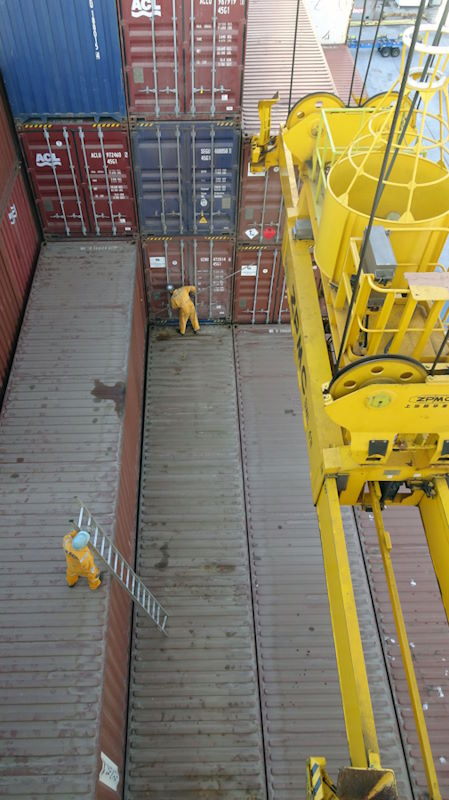In today’s globalized economy, containers play a crucial role in the transportation of goods across vast distances. Ensuring these containers are secure is not only vital for the safety of the cargo but also for the efficiency and reliability of the supply chain. This article explores the importance of securing containers and the methods employed to achieve this.
The importance of securing containers
Securing containers is paramount for several reasons:

Safety
Properly secured containers prevent accidents that could harm workers, damage goods, and disrupt operations. Unsecured containers pose risks during transport, including tipping over, falling, or shifting, which can lead to serious accidents and injuries.
Cargo protection
Securing containers ensures that the goods inside remain intact and undamaged. This is particularly important for fragile, valuable, or perishable items that can suffer from rough handling or environmental exposure.
Compliance
International shipping regulations and standards, such as those set by the International Maritime Organization (IMO), require containers to be secured properly. Compliance helps avoid legal penalties and ensures smooth operations across different jurisdictions.
Efficiency
Well-secured containers facilitate smoother and faster loading and unloading processes, reducing downtime and increasing the efficiency of logistics operations.
Unloading containers – wikimedia-Alacoolwiki
How containers are secured
Securing containers involves a combination of specialized equipment and techniques.
Below are some of the common methods used:
Corner castings and twist locks
The corner casting of a container, as shown in the video, is designed to lock the container in place during transport. Containers are equipped with twist locks that secure them to the chassis of semi-trailers or to the vessel. These twist locks are placed in standardized locations to accommodate containers of various lengths.
Container guide systems

On vessels, containers are guided and secured using rail systems. These systems help guide the container during loading and keep it firmly in place during sailing. The first container in each stack is secured with a twist lock, and the containers above it are locked into place with removable twist locks. Additionally, the bottom layers are tied down to the deck using lashing rods.
You can see some visuals and explanations on securing containers in the below video:
For those interested in going deeper into the world of container transport, we offer a comprehensive course titled “A container’s voyage” This course provides detailed insights into containers and the processes and challenges of moving them globally. Enroll today to enhance your understanding and skills in container logistics.
Get 15% off by using the coupon VOY15 !

Securing containers is a critical aspect of global logistics, ensuring the safety, integrity, and efficiency of cargo transport. By employing proper securing methods and staying informed about best practices, you can maintain a robust and reliable supply chain.
Recommended reading – Which Incoterm to use when shipping containers?

